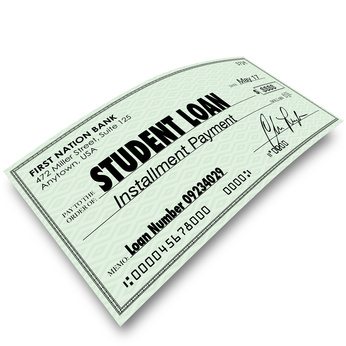Student loan debt is a drain on the wallet of many a college grad these days and collectively, borrowers owe a stunning $1.2 trillion and counting. Refinancing or consolidating your loans is one way to make them more affordable but for certain borrowers, it may not be enough.
When your education debt becomes too much to handle, you might begin to wonder if it’s possible to get some relief by filing bankruptcy. While discharging student debt in bankruptcy is extremely difficult, it’s not altogether impossible. The guidelines are narrow, however, so you need to know exactly what to expect before you file.
Proving a Financial Hardship
The federal bankruptcy code only allows student loans to be discharged in bankruptcy under a very narrow set of circumstances. Generally, the only way to escape your loans is if you can prove that you’re suffering a financial hardship that prevents you from repaying the debt. The rules for determining whether a true hardship exists fall under the Brunner test.
This test includes three specific criteria that you have to meet before your case can proceed. First, you have to show the court that your current financial situation wouldn’t allow you to maintain a minimum standard of living for yourself or your family if you were required to make payments on the loans.
Next, you have to be able to prove that the circumstances surrounding your financial hardship aren’t going to change any time soon. If you’re unemployed, for example, you’d need to show that you’re not going to be able to get another job any time in the near future. For some borrowers, this is the most difficult standard to meet.
Finally, you have to prove that you made a good faith effort to take care of the loans. What constitutes a good faith effort is up to the court’s interpretation so if you’re thinking of filing bankruptcy, you need to be doing everything you can to make good on the loans first.
Filing Your Case
Normally, when you file bankruptcy you fill out the petition paperwork and submit it the bankruptcy court that’s closest to where you live. When student loans are at the heart of the case, the process works a little differently.
You’ll still need to file your petition but you’ll also need to initiate an adversarial proceeding, which is basically a lawsuit within the bankruptcy case. This is necessary before you can attempt to meet the guidelines set out by the Brunner standard.
When You Can’t Pass the Test
If you don’t think you’ll be able to meet the court’s requirements for proving a financial hardship, that doesn’t mean the door is closed on bankrupting your student loans yet. There are some other arguments you can raise that may successfully lead to a discharge.
For example, the bankruptcy code refers to education loans as loans that were used to attend an eligible education institution. This simply means any college or university that’s eligible to participate in the Department of Education’s student aid programs.
If you borrowed from a private lender to cover your college costs at a school that isn’t eligible to take part in federal aid programs, you could make the case that your loans aren’t education loans at all. This is something of a stretch but if the court sees it your way, the loans would become eligible for discharge.
It may also be possible to wipe out your loans if you believe that your lender defrauded you in some way or did something that would have voided your borrower agreement. Again, this can be difficult to prove so if you’re thinking of making this kind of claim you’d want to consult a bankruptcy attorney before you file.
Should You Even Bother with Filing Bankruptcy?
This is a tricky question and the answer really is, it depends. Statistically, 40 percent of debtors who include student loans in a bankruptcy filing are able to get them discharged, according to one study but meeting the hardship standards isn’t as simple as it sounds.
Essentially, you have to be able to prove that you’re more or less destitute and planning to stay that way. Even that may not be enough since the court is allowed to use its own discretion in determining when the hardship test has been satisfied.
One final thing you need to weigh if you’re considering including your student loans in a bankruptcy filing is how it will impact your credit. Although its impact begins to fade after the first couple of years, Chapter 7 bankruptcy can stay on your credit history for a decade.
If you’re planning to buy a home or take out other loans at some point, that negative mark could be an obstacle to getting approved.




